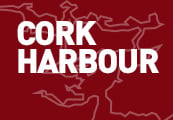Displaying items by tag: The Ocean Race
Rosalin ‘Rosie’ Kuiper says Team Holcim-PRB will be on the starting line in Kiel, Germany and ready to race in The Ocean Race Europe in the summer of 2025.
The Dutch sailor, who competed around the world in The Ocean Race 2022-23 with Team Malizia, is now wearing the blue colours of Team Holcim-PRB and will build out a team to race across Europe next summer.
“The idea is to have an international and diverse team on the starting line in Kiel,” Kuiper said. “We want a healthy mix of experienced sailors and young talent... We will be sailing with a purpose, with a call to action, to go circular.
“It’s going to be great to get racing again with short legs in Europe. We will see the different conditions of the Mediterranean Sea and the Atlantic Ocean so it’s going to be exciting for sure.”
Racing will take place in the newest generation of high-tech IMOCA boats that foil above the water at record-breaking speeds.
The Ocean Race Europe 2025 aims to build on the foundations of the inaugural race and will be held under the banner of “Connecting Europe” with a race course that stretches from the Baltic Sea, through the North Sea and English Channel, into the Atlantic Ocean before a finish in the Mediterranean Sea.
The second edition of the European race, which was confirmed last summer, is scheduled to start on 10 August 2025. More host city announcements are anticipated this spring.
The Ocean Race Sails Into Athens for Our Ocean Conference
The Ocean Race brought the spirit of ocean racing to the Our Ocean Conference 2024 starting on Tuesday (16 April) at the Stavros Niarchos Foundation Cultural Center in Athens, Greece.
On Monday (15 April), Ericsson 1 — one of the ‘legend’ boats that competed in the 2005-06 edition of the round-the-world yacht race — sailed into Marina Flisvos where Nature’s Baton was handed over by the UN Secretary-General’s Special Envoy for Oceans, Peter Thomson to the Greek Prime Minister’s Special Envoy for Oceans and coordinator of the conference, Dr Dionysia-Theodora Avgerinopoulou.
Greek Olympic medallists Sofia Papadopoulou, Sofia Bekatorou and Virginia Kravarioti also welcomed the boat at the dock.
The baton handover is part of the Relay4Nature, an initiative created to help to give the ocean a voice on the critical issues affecting our planet at the landmark events where decisions are made about the environment.
“Carried across land and sea to Athens today, Nature’s Baton brings to the Our Ocean Conference its message of connectivity,” Thomson said. “A universal commitment from around the world is required if we are going to succeed in reversing the decline in the ocean’s health. No healthy planet without a healthy ocean!”
 The Relay4Nature arrives in Athens, Greece on Ericsson 1 | Credit: Austin Wong/The Ocean Race
The Relay4Nature arrives in Athens, Greece on Ericsson 1 | Credit: Austin Wong/The Ocean Race
Nature’s Baton — carrying the message of the critical role the ocean plays in regulating climate change and the wider health of the planet — is being delivered to leaders of the Our Ocean Conference as a reminder of the connection between these key ocean events.
Dr Avgerinopoulou said: “It is crucial to have the global ocean community here with us. Passing the message of ocean protection through sports is key as the threat is out for everyone and sport has the power to convey the message to a key audience: the younger generations.
“One of the main objectives of the Our Ocean Conference 2024 and also next year’s UN Ocean Conference in Nice is the ratification of the BBNJ treaty for the protection of underwater biodiversity in the High Seas. We also need to keep working to combat ocean plastic and microplastic pollution; make sure the blue economy sectors move towards a sustainable path; the shipping sector moves towards decarbonisation as fast as possible; and take care of the Mediterranean Sea, a very fragile ecosystem.”
On Wednesday (17 April), following the closing ceremony of the conference, Nature’s Baton will continue its journey to pass the message to the delegates of the UN Ocean Conference (UNOC 2025), which will be held in Nice in June 2025.
During Ericsson 1’s stay in Greece, the six-member crew will present the boat, her history and the educational program of The Ocean Race to Greek and international friends of the sea.
The Ocean Race is providing “critical” data to international scientists studying the impact of climate change and plastic pollution on ocean health.
Following the 2022-23 edition of the round-the-world race — when all five IMOCA racing boats gathered over 4.3-million data points — The Ocean Race has continued this important marine science work, extending the initiative to two polar expeditions: one in the deep southern waters and another in the high northern latitudes.
Earlier this year, The Ocean Race set up The Ocean Race Science Instruments on an Antarctic expedition sailing vessel that ventured from the Falkland Islands deep into the icy waters around Antarctica.
The Ocean Race installed the equipment, trained the crew on its operation and is managing the logistics for the data and sample collection and delivery to scientific organisations.
This expedition reached a part of the ocean that has been under-sampled due to its remote location and the relatively small number of vessels who travel these waters.
In this case, the sailing vessel was able to collect samples south of 73 degrees south latitude, near Smyley Island, where the seawater temperature is actually just below 0C.
The Ocean Race Science Instruments used in the Antarctica expedition gathered information on marine microplastics, ocean carbon dioxide and oxygen levels, seawater temperature and salinity.
Much of the data collection took place through breaks and gaps in the sea ice off the Antarctic peninsula, and is likely the first time this area has been sampled.
The samples are now en route to Europe where the National Oceanography Centre (NOC) in England will begin analysis. The carbon dioxide samples will be analysed by The GEOMAR - Helmholtz Centre for Ocean Research in Kiel, Germany, among others.
 The OceanPack is one of the instruments that will gather a range of data about ocean health in Antarctica | Credit: Stefan Raimund/The Ocean Race
The OceanPack is one of the instruments that will gather a range of data about ocean health in Antarctica | Credit: Stefan Raimund/The Ocean Race
“This mission to Antarctica was a successful pilot mission to take The Ocean Race Science Instruments and utilise them on unique non-race boats, to gather information from the edges of the world to share with the scientific community,” said The Ocean Race chairman Richard Brisius. “It would not have been possible without the commitment and co-operation with some of the world's most experienced polar sailors, to whom we are very grateful.
“The Southern Ocean around Antarctica is not just the heart and soul of our race, but as we are learning from leading scientists, it is a critical driver of climate, and one of the world’s bulwarks against the impacts of climate change. But due to its remoteness, the waters around Antarctica and especially under the ice pack near the continent, are rarely sampled or researched.”
The Ocean Race Science Instruments will now be installed on an Arctic exploration sailing vessel making a summer transit of the Northwest Passage, departing from Bergen, Norway in June for a three-month expedition, led by accomplished polar explorer Keith Tuffley, with scientific counsel from ohan Rockström, director of the Potsdam Institute for Climate Impact Research, and two oceanography students from the University of Bergen leading the crew. A film team from Brazil specialising in adventure film-making will document the journey.
The inclusion of The Ocean Race Science Instruments on board will allow for some of the first testing for microplastics in the region. Samples and data will be collected and shared with international ocean science organisations like the National Oceanography Centre for analysis.
“These expeditions are an opportunity to build on what we do during The Ocean Race and provide rare data to the scientific community,” Brisius said. “We look forward to seeing how the samples and data that are collected contribute to our global understanding of these sensitive but important environments.”
As The Ocean Race builds its science programme on the water, it will continue to collaborate with leading international organisations to advocate on ocean health.
As part of the IOC UNESCO Ocean Decade Week in Barcelona this month, The Ocean Race will co-organise with IOC UNESCO a session titled ‘Sailing into the Future for the Ocean Decade’ on Tuesday 9 April.
The event will gather thought leaders and change makers from the worlds of science, research, policy and sailing, including IMOCA skippers and veterans of The Ocean Race, Boris Herrmann (Team Malizia) and Rosalin Kuiper (Team Holcim PRB) and feature hosted panels titled ‘Offshore Racing and Science’ and ‘Understand Our Ocean’.
The Ocean Race says it is committed to the race for the ocean and the science programme is an important initiative driving meaningful change towards the restoration of ocean health.
The Ocean Race Europe 2025 Will Start From Kiel in Germany
Organisers of The Ocean Race have confirmed Kiel.Sailing.City as the host of the start of The Ocean Race Europe during a press conference in Kiel on Wednesday morning (14 February).
The second edition of the European race, which was confirmed last summer, is scheduled to start on 10 August 2025 and finish in the Mediterranean some six weeks later. More host city announcements are anticipated this spring.
Previously, Kiel was the finish port of the Volvo Ocean Race 2001-02 and last year the German city hosted a hugely successful ‘Fly-By’ on the penultimate leg of The Ocean Race 2022-23.
Team Malizia and Team Holcim-PRB have both confirmed their intention to be on the starting line in Kiel next year.
For Boris Herrmann, the German skipper of Team Malizia, the Fly-By in Kiel last summer was a highlight of The Ocean Race. Now he says he is looking forward to starting The Ocean Race Europe from
“Kiel feels like home to me and I grew up sailing here over the years,” said Malizia skipper Boris Herrmann. “For me and Team Malizia this is a great announcement and we can’t wait to compete in the race!”
Joining via video-link from Holcim HQ in Switzerland, Rosalin ‘Rosie’ Kuiper — who joined Team Holcim-PRB after racing around the world with Team Malizia last year — said: “Germany is such a big part of The Ocean Race and remembering the crowds who came out to support us on Malizia for the Fly-By in Kiel is amazing, so to hear we will be starting from Kiel is great news.
“Later this year we will start our crew selection process for the new team and I hope to be on the starting line in 2025 with a happy, strong, diverse team so that Boris will tap me on the shoulder and say, ’nice job’!”
 Speakers and guests take an opportunity to pose with Nature’s Baton at the announcement of Kiel as the start port for The Ocean Race Europe 2025 | Credit: Rachel Eismann/Kiel-Marketing
Speakers and guests take an opportunity to pose with Nature’s Baton at the announcement of Kiel as the start port for The Ocean Race Europe 2025 | Credit: Rachel Eismann/Kiel-Marketing
The Ocean Race chairman Richard Brisius said that starting the second edition of The Ocean Race Europe from Kiel “is an opportunity to demonstrate the power of sport to connect us and serve a larger purpose”.
Brisius added: “I have no doubt that the cutting-edge, foiling IMOCA boats and the extraordinary women and men who sail them will produce an exceptional race on the water and an incredible experience for race fans in Kiel, a two-time host of sailing at the Olympic Games and a city whose Kiel Week regatta has become world-renowned as the home of the largest sailing event in Europe.
“But we are determined for The Ocean Race Europe to be more than a great sailing race. All of us here today are firm in our belief that we are in a race for the ocean, that the restoration of ocean health is key to life on our planet.”
To that end, Brisius said, initiatives around The Ocean Race Europe will support learning programmes for race fans and school children, while its onboard science programme will collect data from the race boats for experts to analyse “as they continue to learn about the changes taking place in our waters, from the Baltic Sea in northern Europe to the Mediterranean in the south”.
During the World Economic Forum (WEF) annual meeting in Davos, Switzerland last week, organisers of The Ocean Race connected world leaders who are taking action to restore ocean health.
The Ocean Race brought the spirit of ocean racing to Davos to promote positive change in ocean protection and restoration, with some of the world’s top business and political leaders vowing to scale-up their commitment to the race for the ocean.
Held under the theme “Rebuilding Trust”, the 54th meeting of the WEF (15–19 January), the annual event in Davos-Klosters brought together over 100 governments and major international organisations as well as civil society leaders, experts, youth representatives, social entrepreneurs and media.
This year, the meeting aims to provide a space to focus on the fundamental principles driving trust, including transparency, consistency and accountability.
On Tuesday (16 January), The Ocean Race chairman Richard Brisius led a high-level roundtable co-hosted with Greek House Davos, to team up the public and private sector to support and scale up innovation, promote investments, mobilise scientific expertise, generate ocean data — among other aspects — based on shared resources, networks, knowledge and technologies.
The event highlighted and illustrated the role of the ocean, and its connection to business and the wider economy, and showcased the relationship of the ocean to global efforts towards climate change mitigation and biodiversity enhancement.
Among the participants were John Kerry, United States Special Presidential Envoy for Climate; HSH Prince Albert II of Monaco; Dr Dionysia Theodora Avgerinopoulou, envoy of the Greek Prime Minister and chair of the Hellenic parliament environment committee; Jim Rowan, CEO of Volvo Cars; Ambassador Peter Thomson, UN Secretary General’s Special Envoy for the Ocean; Barbara Karuth-Zelle, COO of Allianz; Paul Simpson, CEO and founder of Cornerstone United Holdings Jamaica; and Simon Fisher, who won the last race with 11th Hour Racing Team, becoming the only navigator to win The Ocean Race twice.
 John Kerry, United States Special Presidential Envoy for Climate at the High Level Roundtable organised by The Ocean Race and hosted at Greek House at The World Economic Forum in Davos, Switzerland | Credit: Eugene Theodore
John Kerry, United States Special Presidential Envoy for Climate at the High Level Roundtable organised by The Ocean Race and hosted at Greek House at The World Economic Forum in Davos, Switzerland | Credit: Eugene Theodore
The roundtable focused on the need for a new relationship between humanity and the ocean based on the recognition of the inherent rights of the ocean, addressing the value of ocean biodiversity and marine protected areas, identifying measures for reduction of marine pollution, and highlighting the ocean/climate nexus and calls to ocean action from business.
The roundtable event was also an opportunity to discuss the desired outcomes from two main global ocean conferences that will be held in Europe: Our Ocean Conference in Athens, Greece in April 2024 and the UN Ocean Conference in Nice in June 2025.
“The ocean is a place of opportunity, where efforts in green shipping, offshore renewables, and other ambitious mitigation actions can make a real difference in fighting the climate crisis,” John Kerry said. “That’s why the Our Ocean Conference, which Greece will host this April, is such an important moment for the ocean and climate. This year, it will have been 10 years since we began the Our Ocean Conference, which was created to be one of action, not just talk. And we’ve delivered on that year after year.”
Simon Fisher said: “After completing six editions of The Ocean Race I believe my fellow sailors and myself are witnesses to the threats facing the ocean as we’ve experienced the changes over the past 20 years. But I’m heartened by the shift towards taking action.
“As an example, in this last race each competing team collected valuable data through water sampling (over four million data points in the last race alone) that contributes to ocean science. Through these kinds of concrete steps, we can use the power of sport to inspire others.”
Brisius added: “At The Ocean Race we have repeatedly demonstrated how we can successfully convene and connect the different perspectives of business, government, philanthropy, academia and civil society, and apply the lessons we have learned through our sport to the race to restore ocean health.
“At The Ocean Race High Level Roundtable here in Davos attendance and insights shared has been extraordinary and exceeded everyone's expectations. Being in a completely full Greek House was outstanding and we couldn’t have squeezed even one more person in to the room. We are blown away and extremely grateful for the interest and the urgency shown from all who shared their experience and expertise with each other here today… All for the good of the ocean.”
Brisius — who is a member of Friends of Ocean Action, a unique group of ocean leaders, convened by the Ocean Action Agenda at the WEF — attended a number of WEF sessions on behalf of The Ocean Race, as well as speaking informally at various events that characterise the WEF in Davos.
The Ocean Race Ends an Epic 2023 on a High Note
The year 2023 opened with the start of The Ocean Race from Alicante, Spain on 15 January — the first edition of the event to be raced in the high-tech foiling, flying IMOCAs, and the latest evolution in the 50-year history of the event from the Whitbread Round the World Race to the Volvo Ocean Race to The Ocean Race.
From the departure through the Grand Finale in Genoa, Italy in July, there was close, compelling racing on the water, including the longest Southern Ocean leg in race history and setting a new monohull speed record. It all culminated with the inspiring victory of 11th Hour Racing Team, the first American-flagged team to win the race, and subsequently honoured as World Sailing’s Team of the Year.
Alongside the race around the planet, another colossal effort was taking place: the race for the ocean. Throughout the year, The Ocean Race, its sailors, teams and stakeholders made efforts to support ocean health that included a 75% reduction in greenhouse gas emissions from the race organisation in comparison to the previous edition.
“This past year has demonstrated once again that The Ocean Race remains the pinnacle of human achievement in sport,” said Richard Brisius, race chairman of The Ocean Race. “As we celebrate 50 years of the race and reflect on how the event has evolved over time, this point is stronger than ever and at the heart of our legacy: competing in The Ocean Race is a singular accomplishment in the life of a sailor.
“We enjoyed an incredible race featuring many new sailors taking on the challenge of The Ocean Race for the first time and we had more women participating than ever before. All of our sailors and teams faced hardship and overcame challenges, perhaps none more so than 11th Hour Racing Team with their inspiring race win.
“At the same time, we took important steps forward in our shared mission to protect and restore the ocean, whether through The Ocean Race Summits and Genova Process developing momentum for ocean rights, or our innovative onboard science initiatives and international Learning Programme. As we look to the future, this work will continue to be at the heart of what we do.”
The Ocean Race’s award-winning sustainability programme, developed in collaboration with founding partner 11th Hour Racing, engaged and inspired sailors, teams, stakeholders and fans — such as with the One Blue Voice campaign, which gathered over 32,000 signatures supporting a Universal Declaration of Ocean Rights.
“This was the year when The Ocean Race became the Race for the Ocean, redoubling our previous efforts and building a comprehensive collaboration between sport and sustainability to make a meaningful difference for the ocean,” Brisius added.
Since the conclusion of the Race in the summer, a comprehensive Race Report (with Nielsen and Meltwater) has been compiled showing significant global media coverage and value generated for teams, partners, host cities and stakeholders, including a cumulative media audience of 8.1 billion and a social media listening reach of 2.6 billion. Those interested in more information on the Race Report can contact [email protected].
As 2023 concludes, the Notice of Race has been published for both The Ocean Race Europe, to take place in late summer 2025, and the next edition of The Ocean Race, starting from Alicante in 2026-27.
The entry period for the second edition of The Ocean Race Europe is now open, while entries for The Ocean Race 2026-27 will open on 1 February 2024 and are limited to 10 IMOCA teams with the possibility of additional wild card-entries. There is no entry fee for early registration in both races.
The Ocean Race has taken the top prize in the sustainability category of the 2023 International Sports Awards, hosted by the International Sports Convention.
The award recognises the efforts of the race’s Racing with Purpose initiative, which was created with premier partner 11th Hour Racing to put ocean protection at the heart of the round-the-world sailing competition.
11th Hour Racing has a number of Irish connections. Two Kerry women are working on the Racing with Purpose programme: senior advisor is marine biologist Lucy Hunt, founder of the Sea Synergy marine awareness research and activity centre based in Waterville and Cahersiveen, while Rebecca White of Portmagee is an advisor on the learning programme, which is shortlisted for its own sustainability prize next week at the Reimagine Education Awards. And Kerry offshore racing veteran Damian Foxall is sustainability programme manager of 11th Hour Racing Team, the winning IMOCA in the latest edition of The Ocean Race.
Hosting an event that was as sustainable as possible was imperative in the race’s goals for its 2022-23 edition. Through a series of measures, the race reduced its greenhouse gas emissions by 75% compared with the previous edition.
It was also powered entirely by renewable energy, and the race’s plastic footprint was measured in a first for any major sporting event.
Inspiring the next generation is also a key element of Racing with Purpose, with learning programmes in host cities via on-the-ground workshops.
Richard Brisius, race chairman at The Ocean Race said: “Sport has the potential to unify, educate and inspire in ways that can make a meaningful difference. For The Ocean Race, we’ve used our platform and created new opportunities to reach as many audiences as possible, from fans and children to business leaders and heads of state, in order to accelerate action to protect the planet.
“We’re delighted that our efforts have been recognised by the International Sports Awards. It is thanks to the unprecedented spirit of collaboration with our fantastic network of sailing teams, host cities, partners, stakeholders and many other ocean advocates during this edition of the Race that our Racing with Purpose sustainability programme has been able to create such impact.
“And last, but definitely not least, it is thanks to the relentless dedication, expertise and hard work by The Ocean Race team.”
The International Sports Awards take place each year to celebrate “the finest sports work in the world”. The Sustainability Award trophy will be presented at the International Sports Convention which takes place in London from 20-21 March 2024.
This article was updated on Friday 8 December to clarify that Damian Foxall is sustainability manager of 11th Hour Racing Team, not the title sponsor 11th Hour Racing, and to add other Irish connections.
The Ocean Race Takes Action for the Ocean and Climate at COP28
The Ocean Race is at the United Nations Climate Change Conference, aka COP28, to call for the ocean to be a key consideration in the vital climate negotiations and to highlight how sport and business can help to make a positive difference for the planet.
The international summit, which started Thursday (30 November) in Dubai, brings together world leaders to work on solutions to tackle climate change.
While representatives from member countries determine ambition and responsibilities, and identify and assess climate measures, the event is also attended by business leaders, NGOs and the public, to share solutions and accelerate action.
At COP28, The Ocean Race will leverage its experience working in the public and private sphere to call for greater efforts to protect the ocean, highlighting the ocean’s role as both a victim of the damaging impacts of climate change and a climate hero that locks away the majority of heat and carbon dioxide generated by burning fossil fuels.
 UN Secretary-General António Guterres receives the Relay4Nature Baton at The Ocean Race Summit Cabo Verde on 23 January 2023 | Credit: Sailing Energy/The Ocean Race
UN Secretary-General António Guterres receives the Relay4Nature Baton at The Ocean Race Summit Cabo Verde on 23 January 2023 | Credit: Sailing Energy/The Ocean Race
The race’s organisers will also share how it is reducing its own emissions and highlight its initiatives to inspire action for the climate and ocean, including:
Gathering data about the health of the ocean: During The Ocean Race 2022-23 over four million measurements across 18 types of environmental data were collected by teams as they raced-around-the-world. At COP28, race chairman Richard Brisius will talk about the race’s science programme in an Ocean Climate Spotlight session organised by IOC-UNESCO and OceanX. The event will dive into the different types of data that were collected — including key indicators of climate change such as water temperature, dissolved oxygen and carbon dioxide — and how it is analysed by 14 leading science organisations before feeding into reports about the state of the planet.
Driving support for ocean rights: The Ocean Race held an ‘Ocean-Climate High-Level Reception’ with IUCN, the Ocean-Climate Platform and the UN Climate Change High Level Champions in one of the first ocean-focused events at COP28. The Ocean Race discussed its ambitious aim to help secure a Universal Declaration of Ocean Rights by 2030, which would put in place a global approach to protecting our blue planet with the ocean’s right to thrive at its heart. The event builds on The Ocean Race Summits — a series of events held on four continents focused on ocean rights, which culminated in a special event at UN headquarters during the General Assembly in September.
Slashing greenhouse gas emissions by 75%: A number of measures, including sourcing all power from renewable energy, reducing the number of staff travelling internationally and drastically reducing the number of shipping containers used in the global event, led to The Ocean Race 2022-23 producing 75% less greenhouse gases (GHGs) compared with the previous edition of the race.
Urging increased action to protect and restore the ocean: Nature’s Baton, the symbol of Relay4Nature — an initiative from The Ocean Race and UN Secretary General’s Special Envoy for the Ocean, Peter Thomson — will take centre stage at COP28, calling for urgent ocean action. During the lead up to the 2023 race, Nature’s Baton visited 10 intergovernmental conferences advocating for the ocean and was held by global leaders, before sailing around the planet in The Ocean Race 2022-23. It then brought the messages from all that held it, to the UN General Assembly in a special event in New York in September 2023.
Engaging children around climate change and the ocean: The Ocean Race’s learning programmes have been created to help young people understand the importance of protecting the ocean. Set against the backdrop of the action-packed race, the materials, which are free and available in multiple languages, explain how the ocean is connected to the climate and crucial to all life on Earth.
 Data revealing insights into the health of the ocean will be collected from remote areas of Antarctica over the next two-plus months | Credit: henrique setim/Unsplash
Data revealing insights into the health of the ocean will be collected from remote areas of Antarctica over the next two-plus months | Credit: henrique setim/Unsplash
Richard Brisius, race chairman at The Ocean Race will represent the organisation at COP28. As well as supporting key initiatives such as the COP28 Dubai Ocean Declaration, the World Economic Forum Friends of Ocean Action (of which he is a member) and highlighting how the race is taking action, he will meet business leaders and policy makers to drive support for ocean rights and develop collaborations.
Brisius said: “We need world leaders to recognise the critical role of the ocean and put it at the heart of the agenda at COP28. But we know sports and business can make a difference too. Teamwork is essential to The Ocean Race, our efforts to protect the planet are only possible because of the fantastic network of teams, host cities, partners, stakeholders and many other ocean advocates that we join forces with to make a meaningful difference.
“By spotlighting some of our initiatives, we hope to inspire other sports and businesses to use their platforms and take action as well. We need all hands on deck to fight the climate crisis.”
The Dubai summit is the third consecutive UN Climate Change Conference that The Ocean Race has taken part in. The work to drive action to protect the ocean is at the heart of the Racing with Purpose sustainability programme, which was created in collaboration with 11th Hour Racing.
As a key pillar of Racing with Purpose, the science programme has been extended beyond the race itself in order to continue the collection of vital ocean data between events. The Ocean Race is providing expert support and science equipment to teams in other competitions (including the recent Transat Jacques Vabre), along with expeditions that go to parts of the planet where little or no data has previously been gathered.
 Antarctic veteran and sailor Stephen Wilkins, who has visited the region 22 times, will be in charge of gathering the data and samples during a unique four-month expedition on a sailing yacht specifically designed for polar conditions | Credit: Rick Tomlinson/The Ocean Race
Antarctic veteran and sailor Stephen Wilkins, who has visited the region 22 times, will be in charge of gathering the data and samples during a unique four-month expedition on a sailing yacht specifically designed for polar conditions | Credit: Rick Tomlinson/The Ocean Race
Earlier this week, The Ocean Race announced it is driving an Antarctic science mission in which vital data about the health of the ocean will be gathered at the southern fringes of the planet including remote locations south of 70 degrees.
As well as gathering data on key indicators of climate change, water samples will be collected and examined for tiny microplastics (down to 30 microns in size), a level of analysis that has never been done before in Antarctica, marking a significant opportunity to improve knowledge of the extent of plastic pollution in this remote region.
This comes at a time when Secretary-General of the United Nations, António Guterres has warned about the importance of protecting Antarctica, ahead of the start of the critical COP28 negotiations. The region is of particular significance to The Ocean Race, with teams sailing through the Southern Ocean and around Antarctica for 50 years and experiencing firsthand the changes taking place.
The Ocean Race 2022-23-winning 11th Hour Racing was named Team of the Year at the World Sailing Awards ceremony in Málaga, as previously reported on Afloat.ie.
And skipper Charlie Enright was on hand to pick up the prize on Tuesday evening (14 November).
From January to July of this year, Enright led his 11th Hour Racing Team to a come-from-behind victory in The Ocean Race, demonstrating remarkable resilience and fortitude over the toughest fully crewed offshore race in the world.
For Enright, the victory was truly a team effort. “Winning this race has been such an achievement for the entire team,” he told the crowd at a homecoming event in Newport, Rhode Island this past summer.
“We went through the first half of the race not winning a leg and then...we won Leg 4 into our hometown of Newport. This was a turning point for us in the race and the momentum stayed with us right through to the final victory.”
Among the other deserving winners on the evening, were The Magenta Project, which was recognised with the World Sailing 11th Hour Racing Sustainability Award.
The Magenta Project was born out of the Team SCA campaign in the 2014-15 edition of The Ocean Race and advocates for gender diversity across the sailing industry through mentoring, events and governance.
New Three-Part Documentary Is an All-Access Pass Behind the Scenes of The Ocean Race
A three-part TV documentary featuring a deep dive into the lives of the sailors and teams competing in The Ocean Race 2022-23 is now streaming on discovery+ and the Eurosport app.
A Voyage of Discovery: The Ocean Race follows key sailors from the five IMOCA teams racing around the world, including the skipper of the winning 11th Hour Racing Team, American sailor Charlie Enright.
Viewers are taken behind the scenes and given an all-access pass to live the drama of the toughest fully crewed race in the world, experiencing all of the highs and lows as the best sailors in the world take on this iconic offshore challenge.
All five race teams feature in the documentary, which takes a close look at the event through the lived experience of four sailors including Enright, GUYOT environnement – Team Europe crew member Annie Lush, Biotherm skipper Paul Meilhat and Team Malizia co-skipper Rosalin Kuiper.
“I’m super excited about the documentary,” said Kuiper. “It was very special to be part of it and I shared my feelings and thoughts with the producers like I would with my family and that was special. I’m excited to see it as I had no filter and really shared everything from my heart.
“It’s a really cool way to go behind the scenes and dive into a sailor’s brain. I hope we can continue this in the future, to allow us to show the human adventure in addition to the sporting side.”
A Voyage of Discovery: The Ocean Race is the latest television output from the 50th anniversary edition of The Ocean Race, which started in Alicante, Spain on 15 January this year and finished at the Grand Finale in Genoa, Italy on 30 June.
A Voyage of Discovery: The Ocean Race was broadcast exclusively in three parts across Europe at Friday 3, Saturday 4 and Sunday 5 November on Eurosport’s channels. Streaming of all three episodes is available on discovery+ and the Eurosport app in Europe, and Eurosport Extra in Poland.
The three-part series was produced and directed by Robert Bevan and edited by Steven Douglas Blake for Warner Bros Discovery.
























































